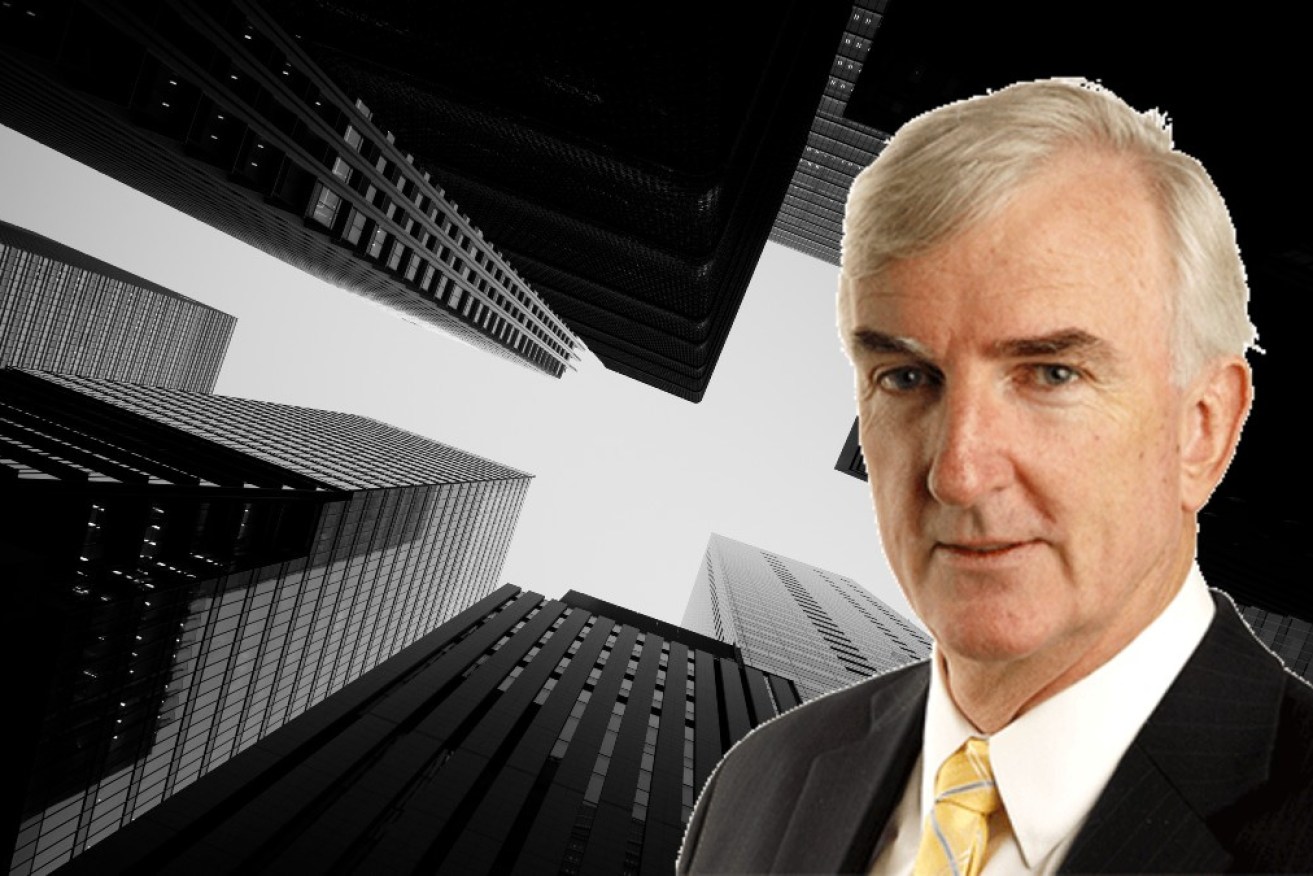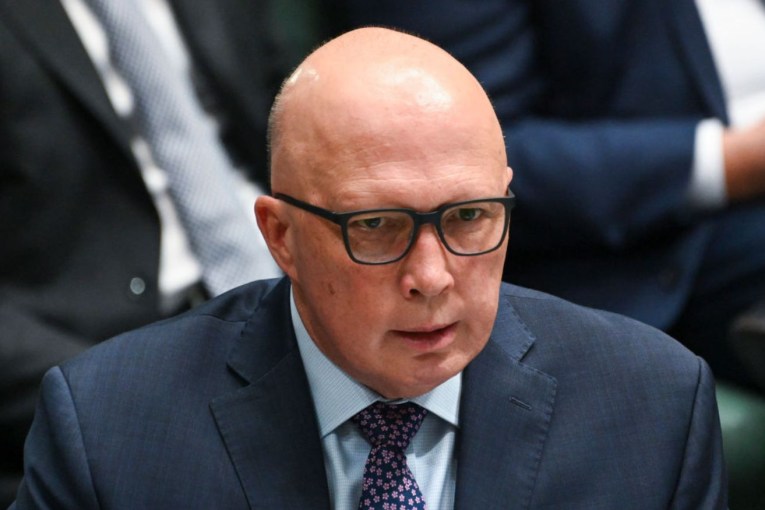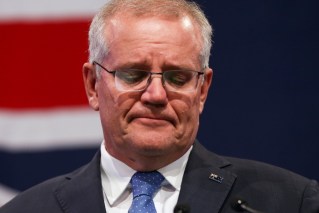Michael Pascoe: The government has a policy to increase inequality


The rising inequality in Australia is official government policy, Michael Pascoe says. Photo: TND
Hopes (or fears, if you watch Murdoch’s Fox News) are high in the United States that the new president will attack the seeds of Trumpism as well as hose out its symptoms.
Meanwhile, in happily blessed Australia, it is official government policy to keep travelling down the Trump road, to increase the inequality and division that made President Trump possible.
We’re starting this journey higher up the hill from the valley of despair that has entrapped many millions of Americans, but we’re heading in the same direction: An entrenched underclass that cannot escape poverty, lower wages and a smaller slice of the national wealth for working stiffs, more and richer billionaires atop the booming 0.1 per cent class.
That is no accident.
Let me repeat: It is government policy, lobbied for and applauded by those at the top of the heap, rationalised and gaslit by the “useful idiots” on their payroll.
And the COVID crisis has turbocharged the above trends even while unprecedented amounts of government money have been splashed around, some of it temporarily lifting people out of poverty.
As Oxfam’s Lyn Morgain explained here on Monday, our fabulously wealthy Australians have become even more fabulously wealthy during the pandemic.
“Australia’s 31 billionaires raked in nearly $85 billion since the global pandemic was declared in March – an almost unimaginable sum that is enough to give the 2.5 million poorest Australians a one-off payment of just over $33,300 each,” she reported.
At the same time, an Oxfam-commissioned survey of economists found an expectation that women and ethnic minorities in particular will be the prime victims of the sharpest increase in inequality in half a century.

Australia’s wealthiest people – including Andrew Forrest and Gina Rinehart – have become wealthier during the pandemic.
Our richest and second-richest Australians – Gina Rinehart and Andrew Forrest have more than doubled their wealth on the back of the skyrocketing iron ore prices – but the broader policies already in place are aimed at making all the rich richer and inequality worse.
The key elements threatening to send us down the American road are:
- Rampant asset price inflation driven by record low interest rates. The evidence is there in the surging stockmarket and high real estate prices, the latter despite the crash in population growth. If you’re already wealthy enough to have plenty of assets, those assets are worth heaps more, making it more expensive for those without assets to acquire them and leaving back in the dust those who can’t borrow to join the game

High real estate prices are continuing to exacerbate the gap between haves and have-nots.
- Wages growth suppression – public-sector wages frozen or limited to the level of depressed private-sector growth on top of reduced penalty rates, casualisation of the workforce in the “gig economy” and ahead of threatened “greater industrial relations flexibility”
- Flattening our progressive income tax system. Stage Two of the Morrison tax cuts was part of it, temporarily disguised by extending the Low and Middle Income Tax Offset that expires this financial year, but Stage Three is programmed to deliver in spades with a flat marginal tax rate of 30 per cent on tax incomes from $45,000 to $200,000
- Maintaining as a matter of core faith without change the existing tax breaks that massively benefit the wealthy – the capital gains discount, cash franking credits for entities that don’t pay tax, trust structures. The wealthy actually pay a lower marginal tax rate on their serious money than someone on the median wage of about $60,000. And, come the Stage Three tax cuts, someone on a reasonable six-figure taxable income (and that’s after whatever tax minimisation and packaging opportunities are used to reduce said income) will pay a marginal rate of just 15 per cent on their share of investment capital gains, half the marginal rate of a casual cleaner on $50,000 a year

Prime Minister Scott Morrison has made preferential tax breaks central to his government policy. Photo: Getty
- Eschewing meaningful social housing investment, maintaining the decades-long slide in government housing, thus denying the worst-off Australians the security of stable, affordable housing, leaving them prey to the vagaries (and often poor quality) of the bottom end of the private rental market. The political choice of pouring a couple of billion federal dollars into the HomeBuilder program, instead of social housing, increases the wealth of those who are already well enough off to be undertaking large extensions or buying new housing
- Maintaining eye-watering marginal tax rates of 100 per cent for parents trying to get back into the workforce or on the bleeding edge of our social welfare system
- Maintaining blind faith in “trickle-down” economics, nicely described by John Kenneth Galbraith as the belief “that if one feeds the horse enough oats, some will pass through to the road for the sparrows’’. It is the government’s belief that subsidising and preferencing business and those at the top will see money trickle down to the workers.

Economist Dr Michael Keating. Photo: AAP
Yes, Messrs Morrison and Frydenberg are spending money to support the economy – they had no choice given that interest rates were already stuff-all – but they are doing it with a non-Keynesian belief that the economy will automatically return to what used to be considered “normal”.
Dr Keating notes that the economy had not been “normal” before the pandemic, that the same-old-same-old policies weren’t working.
“For the past half decade the proportion of national income devoted to profits has been climbing while the proportion devoted to wages has been falling,” he wrote.
As for COVID turbocharging a trend, the Australian Bureau of Statistics reported wages’ share of total income fell below 50 per cent for the first time since 1959 while profits’ share jumped to more than 30 per cent. I can’t find a higher score for profits on that measure.
Some businesses have been destroyed by the pandemic, but businesses overall have done well out of government programs – as many of our billionaires can attest.
Dr Keating believes that if the government was really Keynesian, it would acknowledge the structural changes affecting income distribution and wouldn’t be forecasting such strong growth in the next few years.
“A government that had fully adopted Keynesian policies would recognise it needs to support reasonable wage increases, rather than push for wage freezes as it has been doing,” he wrote.
“Over time the weakness in demand is likely to lead to lower investment, slowing the take-up of new technology and slowing growth in productivity.
“In accordance with the models the government does use, this will cut Australia’s potential rate of economic growth, producing lower living standards (albeit with lower unemployment because of less-productive workers) than we otherwise would have had.”

Many businesses have been destroyed by the pandemic while many others have thrived. Photo: Getty
Yes, it is government policy for the rich to get richer and too bad about the rest.
The end result of that is to end up with the seeds of Trumpism – and revolution.
Regular readers will be familiar with fund manager Mike Mangan’s concerns about rampant American inequality.
His latest spray highlights a Bank of America report that the world’s 41 richest billionaires have as much wealth as the poorest 50 per cent of our planet.
“The gravest threat facing western society is not China, or even COVID,” he wrote. “In my view the gravest threat facing us all is inequality.
“Large chunks of US society are going hungry. If not hungry, borderline impoverished. So they naturally think the system no longer works for them. It’s clearly not.
“So storming the barricades and invading Congress is also a logical decision.
“In America the top 0.1 per cent own more of the nation’s wealth than the bottom 80 per cent. The three richest Americans hold more wealth than the bottom 50 per cent.

The assault on Capitol Hill by Trump supporters seems logical as ‘‘the system no longer works for them,’’ Mike Mangan says. Photo: AP
“University of California economist Gabriel Zucman reckons the 400 richest Americans – the top 0.00025 per cent – tripled their share of the nation’s wealth since the early 1980s.
“Those 400 Americans own more of the country’s riches than the 150 million adults who constitute the bottom 60 per cent of the wealth pie.
“At some point, those 150 million American adults may become very comfortable with the idea of doubling their own wealth by just taking from the richest 400 Americans.
“So if you truly believe capitalism is the best system as I do, then you better hope, pray and agitate we tackle inequality pronto.
“That means higher taxes and a higher share of the pie for ordinary folk. It won’t be easy.”
As already written, we don’t suffer American levels of inequality, despair and divisiveness – yet. It is government policy to take us in that direction.










